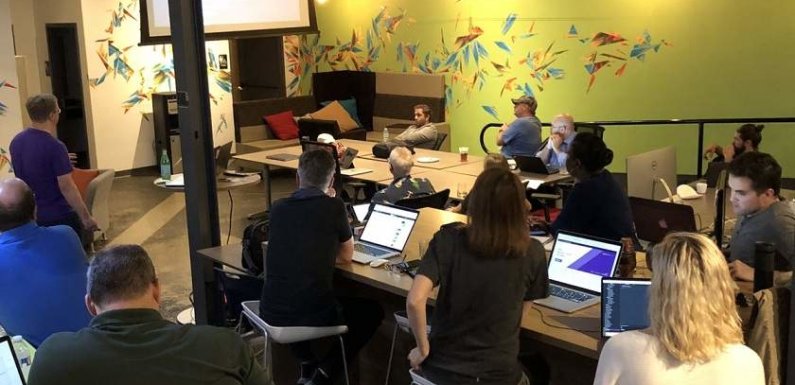
A younger player in the game of developing the websites has emerged, that is “Gatsby”. Is it an alternative to the other website builders? Will this platform overtake all other blogging or website development platforms? Why one should use this? So, to answer all these questions, it becomes important to understand its significance and prevalence. Let’s know this platform better.
What is Gatsby?
Gatsby or GatsbyJs is a free and open-source framework based on React. It is the tool that permits you to develop a set of practices and technologies simultaneously termed as JAMstack. Briefly speaking, Gatsby is a static website that is a group of HTML pages that does not drag any data from the database when an audience checks it. Static websites load faster because the server sends similar feedback to each visitor or the audience.
Gatsby is a static Progressive Web Application (PWA) generator. It loads only CSS, HTML, JavaScript and data to load the websites faster. After its loading process, Gatsby obtains the resources again for different pages so that clicking on the website becomes fast. The reasons why Gatsby is different from other static website generator are as follows:
- Gatsby is based on React, so, it is the best choice for those who are comfortable using it.
- It also utilizes GraphQL which is powerful and popular technology. GraphQL aims to handle the data throughout the application. With the use of Gatsby with GraphQL, more intuitive and declarative applications will be obtained.
- It can be easily integrated with the platforms, such as Netlify for easy configuration of your website to develop and deploy each time you execute and push to GitHub.
- It has plenty of Plugins to fulfill each need for WordPress website development. The plugins can assist you in source data from Content Management Systems, such as Contentful and WordPress with which you can integrate with tools, such as, Algolia and image management by LazyLoading and optimization.
- Gatsby has plenty of API’s which makes static website development much easier. For instance, create page API makes it easy to change the markdown files in static pages with a template at a mentioned time.
- With a wealth of great components, the linking, routing and image handling can be simplified that are not included in the essence of the React library.
How Gatsby works?
The applications in the Gatsby are built with React applications. The content integrated into the website is written with Markdown. But, other data sources or web services such as Headless CMS or Contentful can also be used. When the Gatsby develops a website, it is integrated with Static HTML that could be deployed on any of the Web Server such as GitHub, Netlify and AWS S3, PAAS and regular hosting providers, etc. Most importantly, you need a place that could serve plain HTTP pages with the assets to the customer.
Gatsby generates your websites as PWA automatically with the service worker that speeds up resource caching and page loading. It can be installed by using the below text in the terminal.
It already installs gatsby CLI utility. By using the below command, you can create a novel Gatsby website in my website folder.
The above command would be used with the Gatsby starters. The starter is a sample website that you can build. There are 229 Gatsby starters available at the link.
After the completion of the starter by the terminal, use the below command to run the website. This command will start a new web server and serve the website on almost 8000 ports on localhost.
And, below is our HiGatsby starter in execution:
Gatsby offers three types of Plugins, such as source plugins, transformer plugins, and functional plugins. Source Plugins retrieve the data from the source and then develop the nodes that could be filtered by transformer plugins. The transformer plugins change the data given by the source plugin in the form that could be used by Gatsby. Functional plugin deals with functionalities, such as adding the sitemap, etc. The examples of commonly used gatsby plugins are; gatsby-plugin-catch-links and gatsby-plugin-react-helmet.
After this much examination, a question that comes in mind is that what makes Gatsby different from WordPress?
- Gatsby does not allow you to edit the content for the visitors whereas WordPress being dynamic in nature lets visitors to customize the content. The content is dependent on the visitor in WordPress. Its server decides how to give feedback after analyzing the request.
- Gatsby is a static website generator whereas WordPress is a full-featured dynamic CMS and website engine. Gatsby needs a small level of skills for installation whereas, in WordPress, a web server, PHP and a database are required to install WordPress.
- With a great installation wizard, WordPress can create a blank website easily with a database, but, in Gatsby, it becomes quite tough, as it involves terminals for creating it.
- WordPress came up with plenty of themes, though, Gatsby has limited options for theme development. WordPress dominates in theme development as it comes up with customization process which is not that difficult even if you are not familiar with technical knowledge.
Concluding remarks
We hope that now you are aware of the Gatsby platform. It offers a lot of benefits for websites in terms of security, SEO, speed and is best for those who know a bit of coding and are used for developing smaller websites, personal blogs, and portfolios. Though WordPress is a winner by means of community, popularity and for providing full-featured functionality, Gatsby is in essential form provides some outstanding features as well. There is no comparison between WordPress and Gatsby and they cannot be distinguished. They are best with their own features and functionalities. It all depends on your demand and budget to choose the one.

